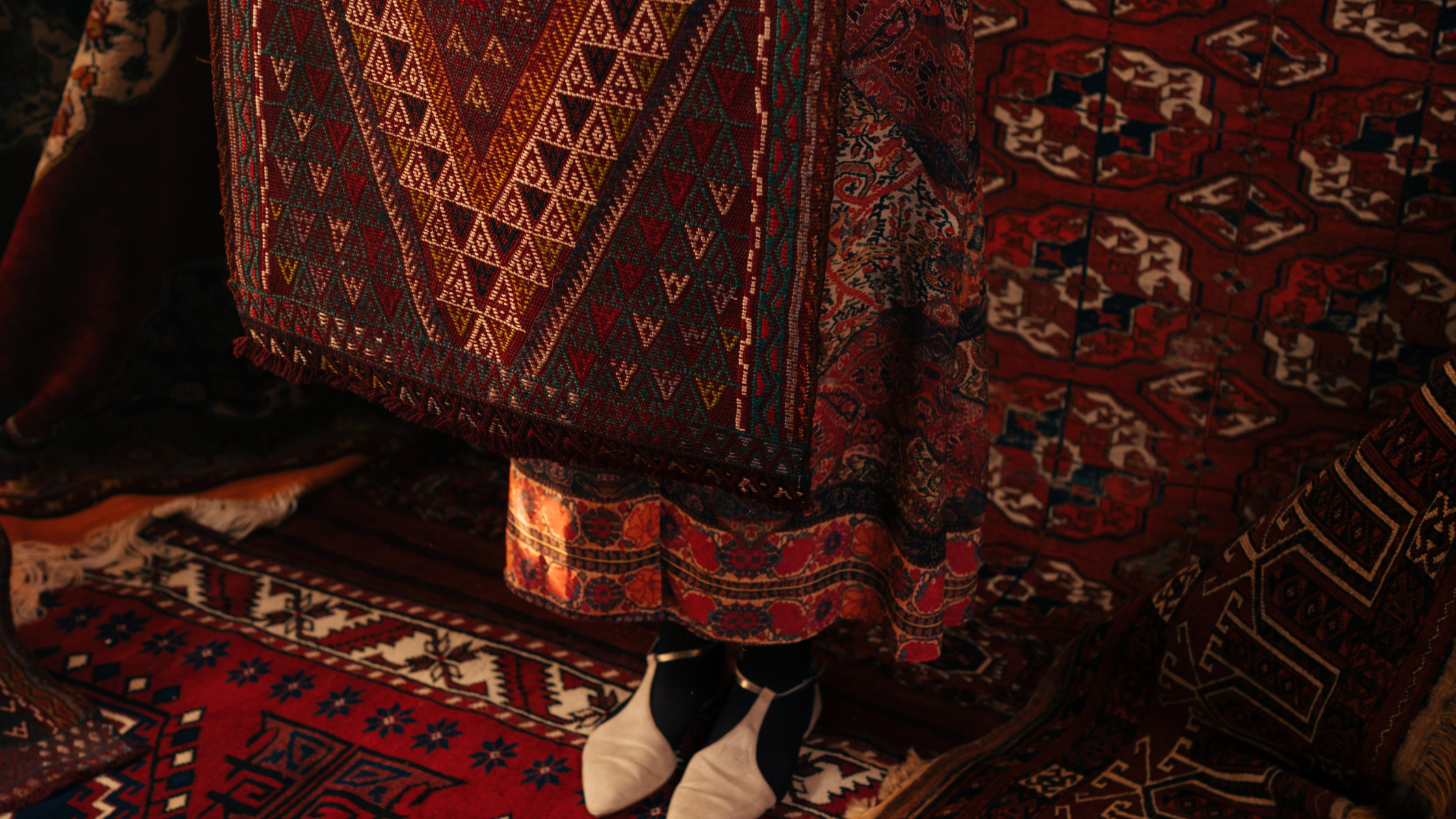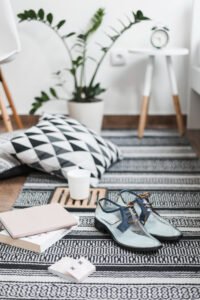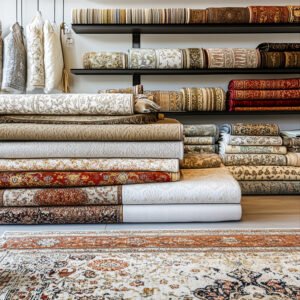The process of decorating a house is an experience that combines individual taste with timeless design. The most effective tools a designer can have is the classic carpet. These intricately woven pieces don’t just add comfort and warmth, but they additionally add heritage cultural heritage, as well as the luxurious. Classic carpets with their intricate patterns, vivid colors, and hand-crafted craftsmanship, can transform any space into a sanctuary of luxury and elegance. In this article we’ll explore ways to integrate the traditional look of carpet into your interior design from a designer’s point of view, while balancing the aesthetics with functionality, while preserving the rich history of each piece.
1. Understanding the Cultural Significance
Before you install a traditional rug at your residence it is crucial to comprehend the history and craft behind these items. Carpets from various regions, like Persian, Turkish, Moroccan or Indian have distinctive designs, colors, and techniques that speak to their roots.
- Persian Carpets: They are renowned for intricate designs and the high density of knots, Persian carpets are often considered to be the ultimate in luxurious. They have floral patterns as well as medallions and intricate geometric designs.
- Turkish Carpets: They often feature bold patterns and vibrant colors and motifs that represent the natural world, fertility and security.
- Moroccan Carpets typically simpler, Moroccan rugs often feature geometric designs that are neutral in palette, making them suitable for traditional and contemporary environments.
- Indian Carpets: These carpets typically feature intricate patterns and vibrant shades, highlighting the rich traditions of textiles in India.
Understanding these details can help you select carpets that not only enhances the aesthetics of your home, but also reflects the culture that you would like to tell in your home.
2. Choosing the Right Carpet for Each Room
The design and function of every room in your house will affect the style of traditional carpet that fits the room. As an interior designer, it is essential to think about how the carpet will be interacting with the space’s other elements.
- Living room Living Room is typically the center of the house and is where you host guests and spend time with your family. A huge, elaborate Persian or Turkish carpet can be the center of attention, supporting the furniture while adding an air of elegance. You can consider a carpet that has the central medallion with the coffee table in the center of the room to focus attention on the intricate particulars.
- Dining Room Dining Room: In the dining room, the carpet must be durable enough to withstand the rigors of heavy pedestrian traffic and spills that may occur. The carpet should be low pile. Turkish or Indian carpet with a thick weave could be the best choice. Be sure that the carpet is enough to hold your dining chairs and table even if they’re removed.
- Bedroom Bedrooms are a place where relaxation and tranquility are essential. A soft, luxurious carpet, like the Moroccan rug with its dense pile will create a comfortable ambience. You can layer carpets in your bedroom, using a bigger carpet that is neutral underneath, and a smaller, more vibrant traditional carpet on the floor at the bottom of the bed for the illusion of depth and the appearance.
- Hallways as well as Entryways Hallways and Entryways: These highly-traffic areas are best served by carpets that are durable and visually appealing. A runner-style carpet that has geometric patterns can help to lengthen the area and provide an inviting touch. Select carpets that have darker shades and intricate designs that cover the wear and wear and tear.
3. Harmonizing Colors and Patterns
The most thrilling aspects of decorating traditional carpets is the chance to experiment with colors and patterns. But, it’s important to strike a balance of contrast and balance so as to not overwhelm the space.
- Colours that complement each other Choose an appropriate carpet to match the color scheme in the room. For instance, if the living space is neutral in its tones, a carpet that has intense reds, deep blues or warm golds can create the room with a vivid contrast. In contrast, if your space already has strong color elements, choose carpets with an understated palette to achieve balance.
- Pattern play Carpets that are traditional usually contain intricate patterns that can be either a be a complement or a contrast with other patterns within the space. To prevent visual chaos, take into consideration the size that the pattern is. If your wallpaper or furniture features large patterns, match them with a carpet with a smaller, more complex pattern. If your space is mostly neutral and a carpet that has a striking, large-scale design can be a statement piece.
- Layering Do not be afraid of layering various carpets to add texture and depth to your living space. For instance, you can place a simple, large Jute rug and then smaller, more elaborate Persian or Turkish carpet over it. This is not just a way to anchor the room but also lets the user to combine various styles and times giving you a unique personal appearance.
4. Balancing Tradition with Modernity
The idea of incorporating traditional carpets in a contemporary home may be a challenge However, with careful choices in design, it is possible to create a harmonious mix of both old and modern rugs.
- A contrast to Modern Furniture: Pairing a traditional rug with modern and minimalist furniture creates a striking contrast. The sleek lines of modern furniture let the intricate design in the rug to be noticed while the carpet brings warmth and personality to the contemporary setting.
- A neutral Backdrop: To emphasize the appeal of a classic carpet, you can choose a neutral palette of colors for walls and bigger furniture pieces. This creates a tranquil backdrop that allows the carpet to shine without being in conflict with other elements of the space.
- mixing eras Do not be afraid to mix different styles and eras. Traditional carpets can blend perfectly with modern mid-century furniture and decors from the past or even industrial-inspired elements. The trick is to ensure the same colour scheme, or motif that holds everything together.
5. Caring for Your Traditional Carpet
Carpets of the traditional type are typically hand-woven and require regular care to ensure their beauty and long-lasting. Here are some tips for designers to make sure your carpet is an important piece within your living space for a long time to be.
- Cleansing your carpet regularly Vacuum your carpet frequently to remove particles and grime. Utilize a vacuum cleaner with an unidirectional suction to ensure that the delicate fibers are not damaged. If you want to do more thorough cleaning, think about professional services that are specialized with traditional carpets.
- Rotation to ensure even wear ensure that your carpet is rotated every couple of months. This is crucial for carpets that are placed in high traffic areas.
- Protect your carpet from Sunlight Direct sunlight can dull the vivid shades of your carpet as time passes. If you are able, place your carpet in a place which is exposed to indirect light or make use of window treatments to shield your carpet from the harsh UV radiation.
- Spot cleaning In the event of spills, take action quickly to remove the spill using a dry, clean cloth. Avoid rubbing because this could cause the stain to get deeper into the carpet fibers. Make use of a soft, safe carpet cleaner and try it on a small and insignificant area first.
Conclusion
The art of decorating your house with carpets from the past is an art form that requires a profound appreciation of the past as well as culture and craft. As a designer your aim is to design spaces that do not just reflect the individual style of your client but also reflect the heritage of the craftsmen who created the timeless carpets. Through understanding the significance of culture and carefully choosing the appropriate carpet for the space by blending patterns and colors while balancing the traditional with the modern and taking care to maintain the proper condition it is possible to transform any room into a stunning, welcoming and meaningful space.
So it doesn’t matter if you’re drawn by intricate patterns on an intricate Persian rug or striking shades of the vibrant colors of a Turkish carpet or the simple elegance of an elegant Moroccan piece Integrating traditional carpets in your decor will surely improve the design of your home to new levels.





